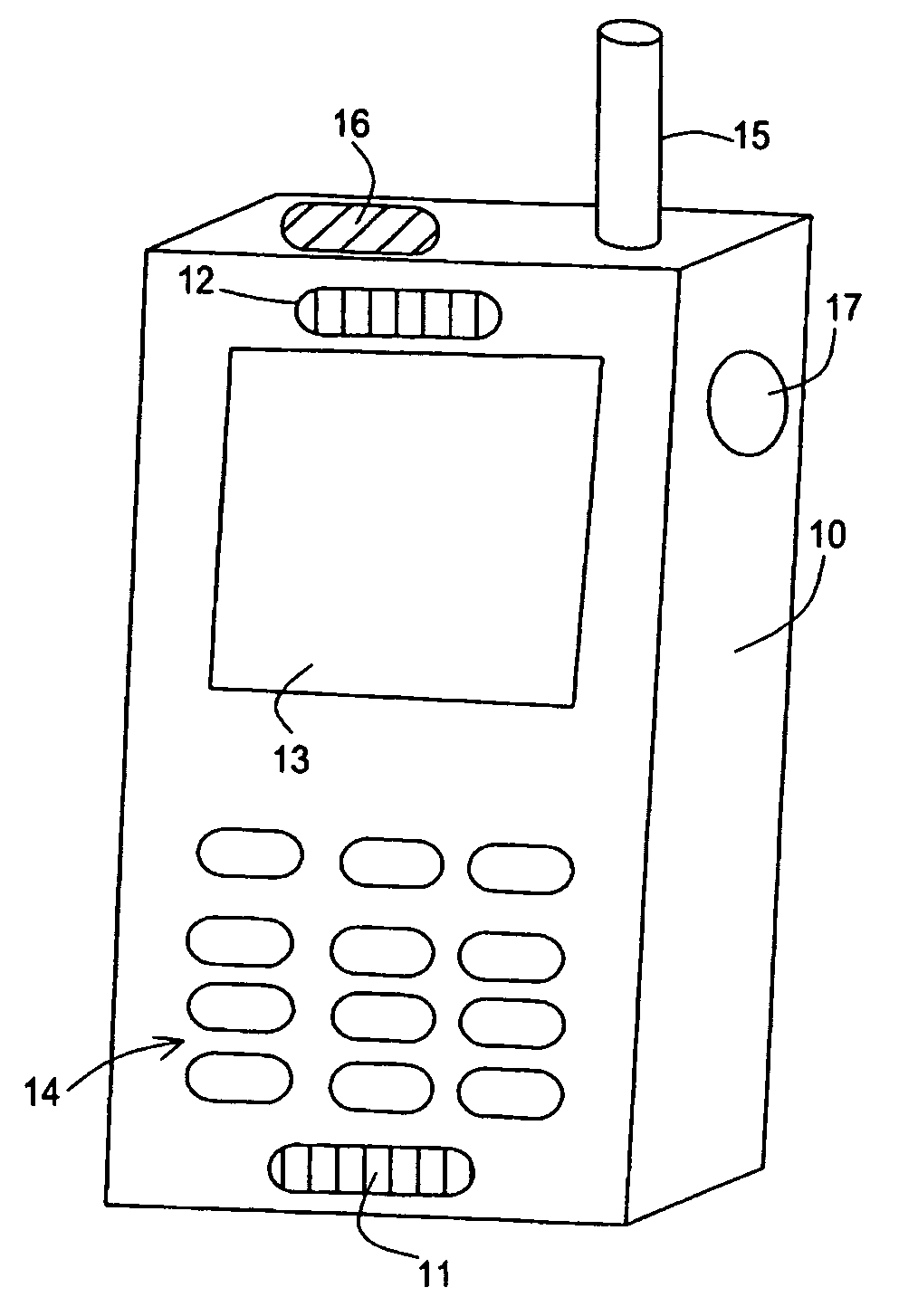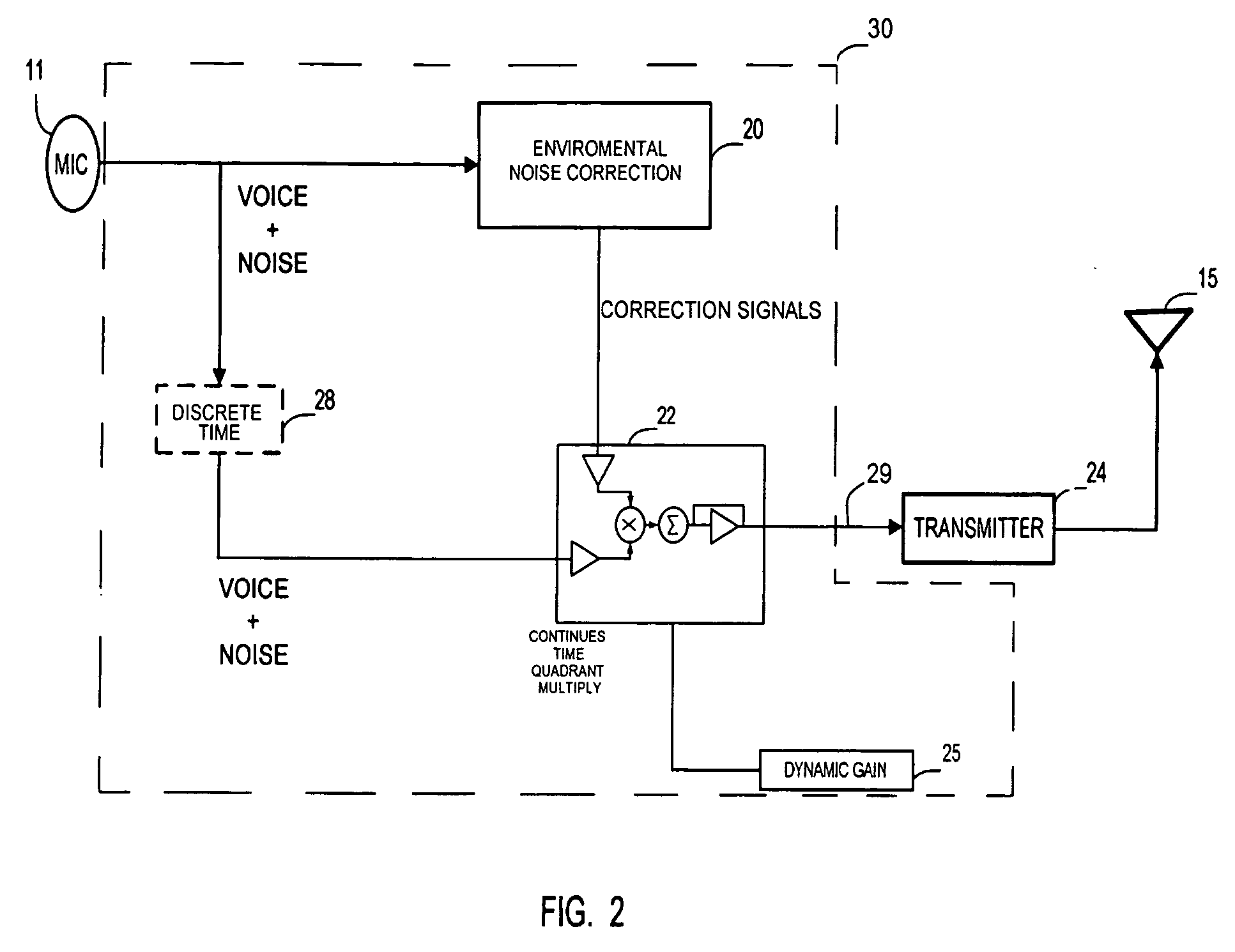Environmental noise reduction and cancellation for a cellular telephone communication device
a communication device and environment-friendly technology, applied in the field of voice communication systems, devices, telephones, can solve the problems of affecting the quality of voice communication, and consuming more bandwidth or network capacity than is necessary, so as to achieve the effect of convenient hearing
- Summary
- Abstract
- Description
- Claims
- Application Information
AI Technical Summary
Benefits of technology
Problems solved by technology
Method used
Image
Examples
first embodiment
[0039] More specifically, in a first embodiment, microphone 11 picks up both environmental noise as well as the intended voice communication (together, the voice+noise or “combined signal”). As is well known in the art of noise reduction and / or noise cancellation, it is possible (e.g., via filtering and digital signal processing techniques) to attenuate or even cancel-out pre-selected portions of an audio signal or pre-selected bands of a frequency spectrum. These techniques may however in some instances be limited to noise that is somewhat predictable, or periodic, such as a vibrational frequency or set of frequencies of an engine or motor.
[0040] As shown in FIG. 2, environmental noise counterbalanced (correction) signal generator 20 is connected to microphone 11 and detects and otherwise monitors the combined signal. It is noted that in this single microphone embodiment, the electrical output signal representing the combined voice and noise signal is communicated to both the envir...
second embodiment
[0060]FIG. 6 is an illustration showing the relationship between the inventive noise reduction processing block 32, the first and second microphones 11, 16 and the remainder of the exemplary cellular telephone 40. Again, it will be apparent to those workers skilled in the art that the inventive noise reduction and cancellation block is interposed or coupled between the first microphone 11 and the second microphone 16 of the telephone and the analog baseband / voiceband CODEC of the conventional telephone. It will be apparent in this embodiment that even though there are two microphones, there is still only one noise reduced signal output from the noise reduction and cancellation processor 32 to the input of the analog baseband / voiceband CODEC so that no modification is required. Again, the output of the noise reduction processing block 32 may be seen to be a processed version of the original dual microphone input and may connect at the same microphone input port as in a conventional t...
PUM
 Login to View More
Login to View More Abstract
Description
Claims
Application Information
 Login to View More
Login to View More - R&D
- Intellectual Property
- Life Sciences
- Materials
- Tech Scout
- Unparalleled Data Quality
- Higher Quality Content
- 60% Fewer Hallucinations
Browse by: Latest US Patents, China's latest patents, Technical Efficacy Thesaurus, Application Domain, Technology Topic, Popular Technical Reports.
© 2025 PatSnap. All rights reserved.Legal|Privacy policy|Modern Slavery Act Transparency Statement|Sitemap|About US| Contact US: help@patsnap.com



